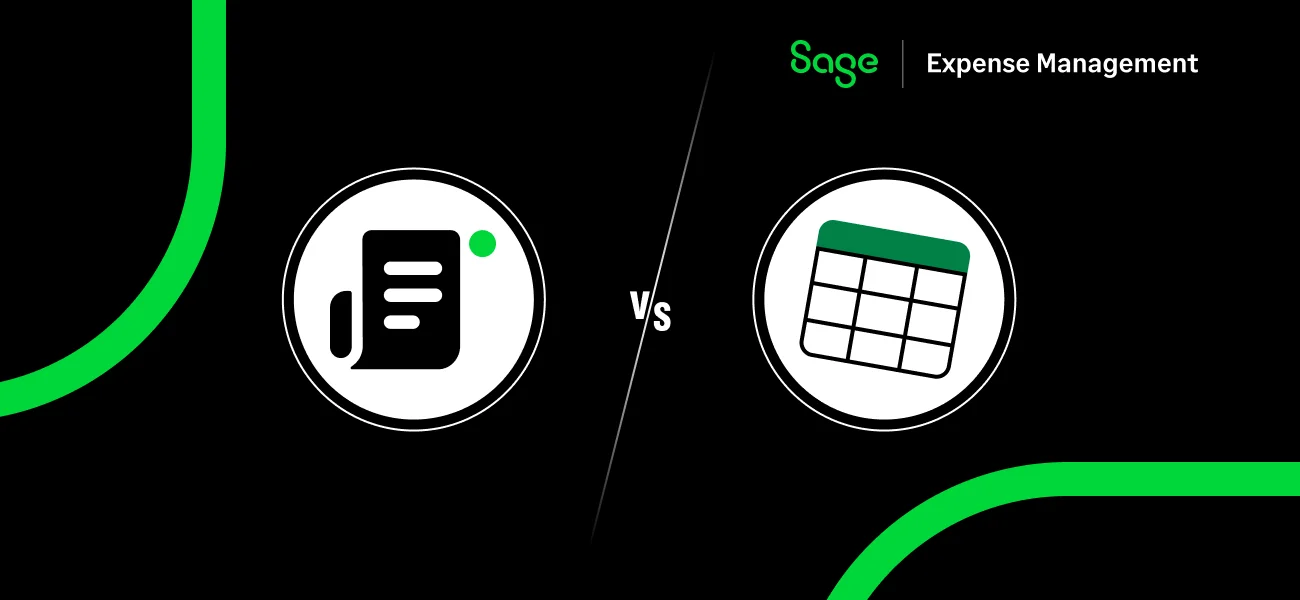Business travel is an essential part of a growing company, but managing the expenses associated with it can be a significant challenge. The receipt chase and the complexity of manual expense tracking can leave both employees and finance teams frustrated. Per diem, a standardized daily allowance for travel expenses, is designed to solve this exact problem.
This guide will help you understand the foundational IRS rules that govern per diem. We’ll cover what per diem is, how to calculate the rates, and, most importantly, the compliance rules you must follow. This knowledge will help you simplify your expense process and ensure you stay compliant with the IRS.
What is IRS Publication 1542?
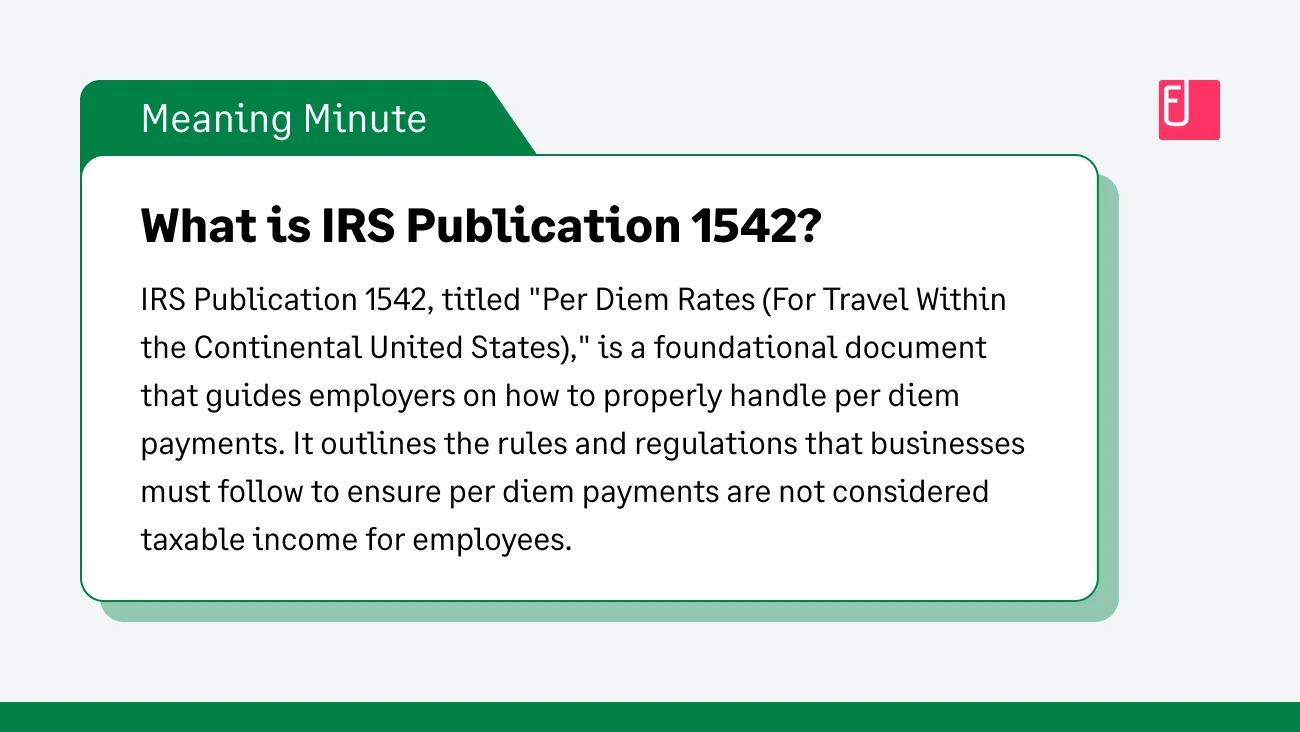
While the publication itself has not been updated since 2011, its principles remain relevant. Today, the GSA publishes the latest per diem rates, but the tax rules and substantiation methods outlined in the original publication are still used to ensure that per diem allowances are non-taxable to employees. Understanding this publication is crucial for any company that wants to simplify its expense process while remaining compliant with the IRS.
What is Per Diem?
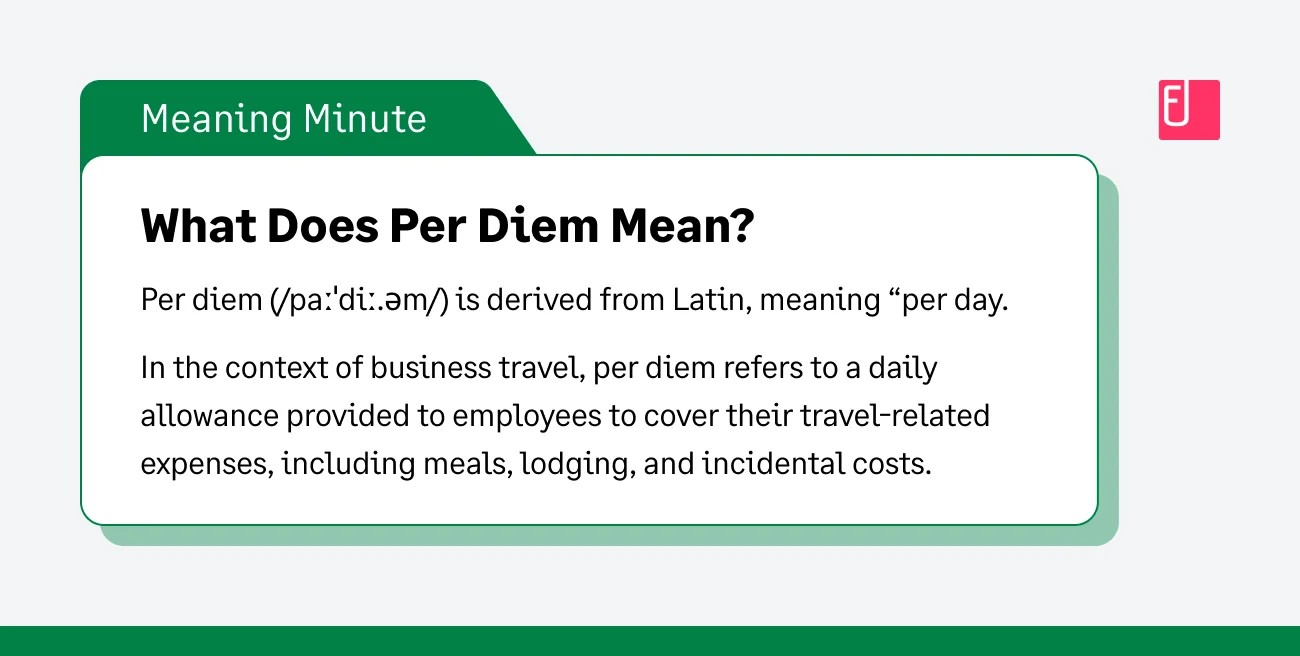
Per diem refers to a daily allowance that an employer can pay to an employee for business travel expenses in place of reimbursing them for every individual receipt. This flat daily rate simplifies expense reporting by eliminating the need for detailed, item-by-item tracking of every meal and minor cost.
What it Covers
Per diem is a blanket allowance for a traveler's daily costs. It typically has two main components:
Lodging: This covers the cost of hotels or other temporary accommodation.
Meals and Incidental Expenses (M&IE): This component covers all costs related to meals, as well as incidental expenses. These include fees and tips for services like baggage handling and hotel staff, as well as costs for dry cleaning and laundry while on the trip.
How to Calculate Per Diem Rates?
The Basics
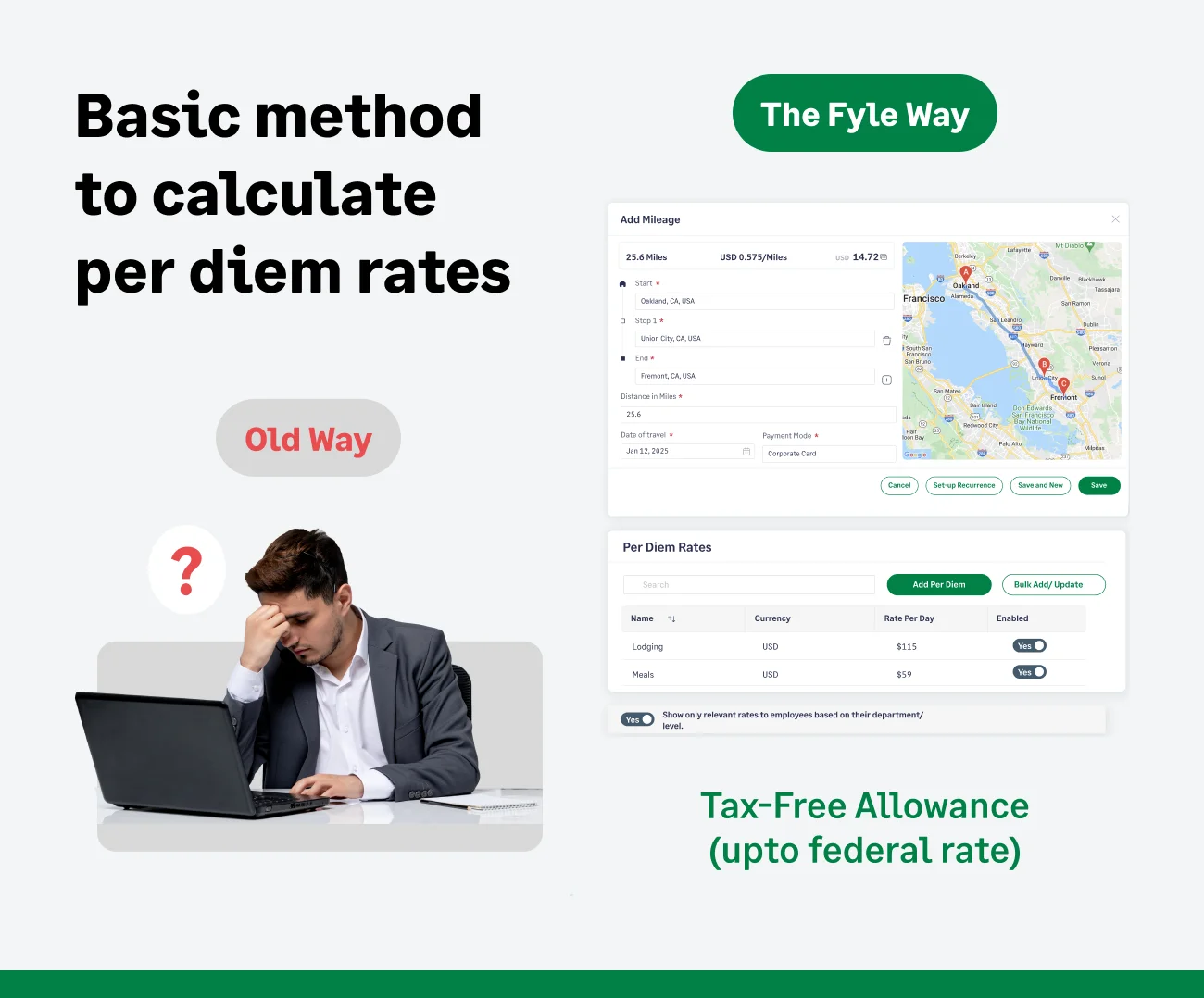
Per diem is a flat daily rate that can be used in place of tracking and submitting receipts for every single expense. The key benefit is that if an employer pays an employee an allowance that is less than or equal to the federal per diem rate, the payment is not considered taxable income.
Standard vs. High-Cost Localities
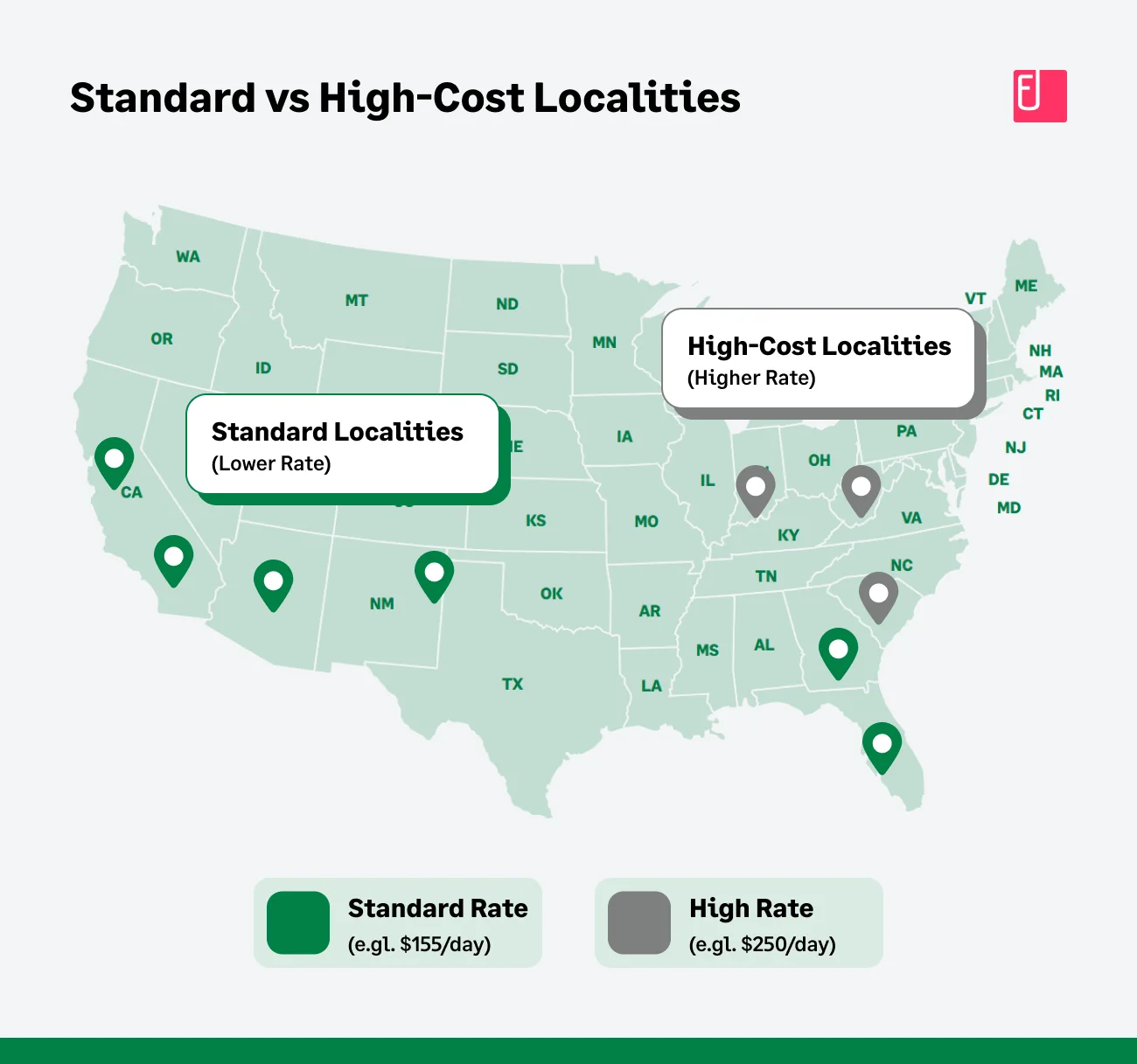
Per diem rates vary based on location. The General Services Administration (GSA) sets the rates for business travel within the continental United States (CONUS). Every year, the GSA establishes a standard rate for most locations.
For areas with a higher cost of living, such as major cities, the GSA designates them as high-cost localities with a higher per diem rate.
The Regular Federal Per Diem Rate Method
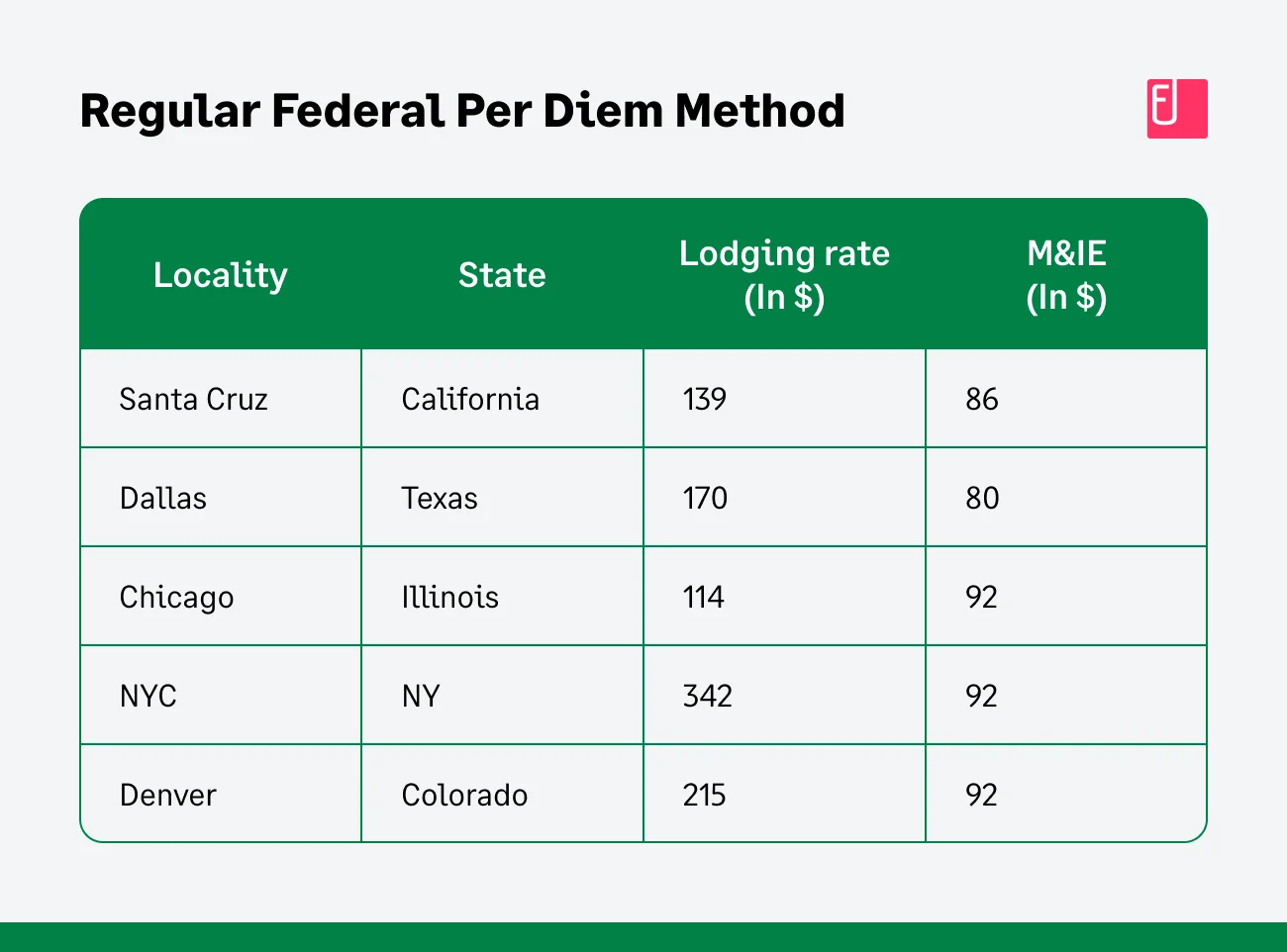
This method uses a specific, detailed per diem rate for each locality. The rates are broken down into separate amounts for lodging and M&IE, and they are typically updated annually to reflect current market rates. While accurate, this method can require employers to manage a large list of varying rates.
The High-Low Substantiation Method
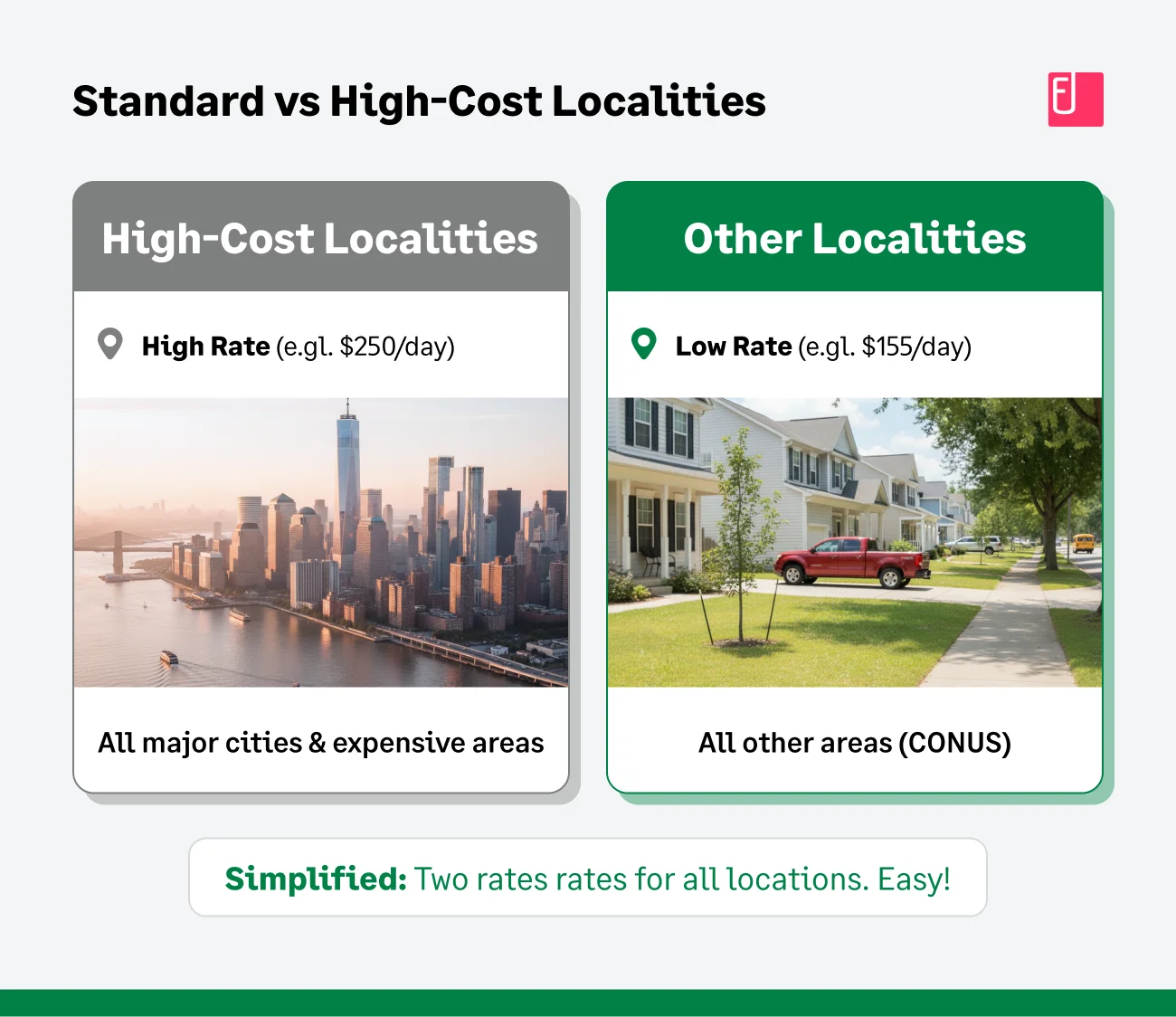
To simplify the process, the IRS created the high-low substantiation method. This method uses one high rate for all high-cost localities and one low rate for all other areas within CONUS.
This is a crucial simplification for employers that travel to a mix of locations, as it eliminates the need to look up a different rate for every single city.
Introducing Sage Expense Management's (Formerly Fyle) Per Diem Calculator
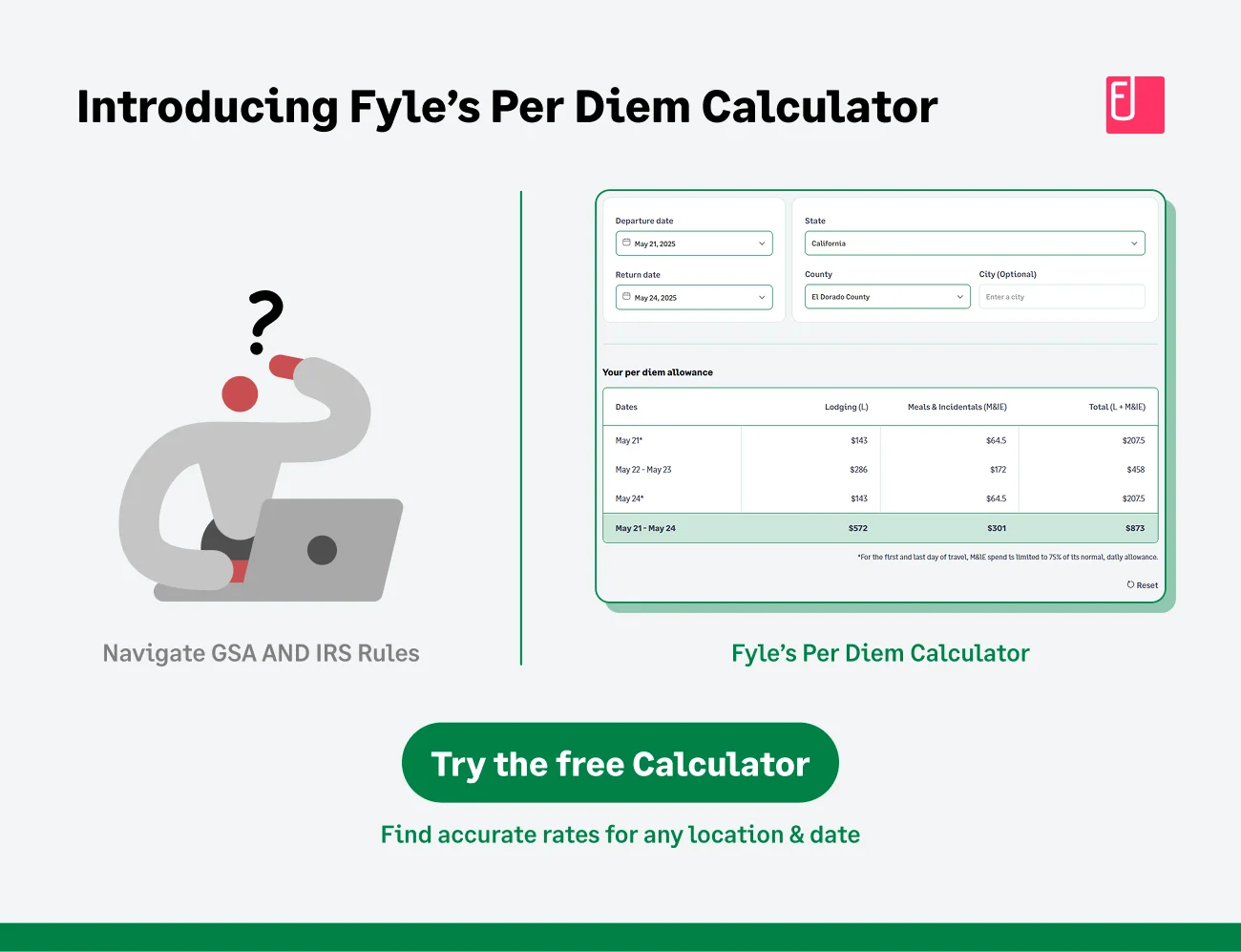
Navigating GSA and IRS rules can be challenging. To help you, Sage Expense Management provides a free per diem calculator that allows you to easily find the latest per diem rates for any location and date.
Understanding the Rules for Per Diem Compliance
To ensure your per diem payments remain non-taxable, you must follow the IRS's strict guidelines for compliance.
Documentation is Key
Even though employees are not required to keep receipts for every meal, they must still substantiate their business expenses.
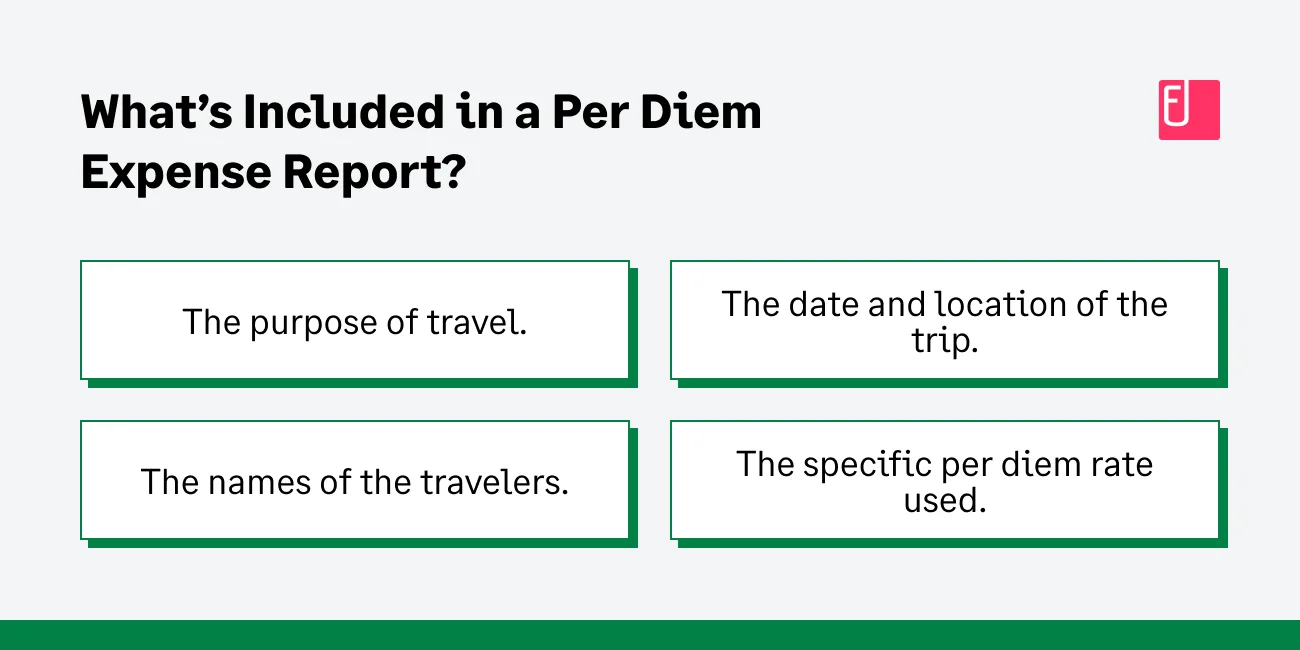
The Reasonable Period of Time Rule
A per diem allowance is only non-taxable if it is part of an accountable plan that requires employees to account for their expenses within a reasonable period of time. While this is a facts-and-circumstances test, the IRS considers 60 days after an expense is paid or incurred to be a safe harbor for timely accounting.
Also Read
The One-Year Rule
Per diem is a benefit for employees traveling away from home. The IRS defines this as traveling in a manner that requires you to get sleep or rest away from your tax home. This benefit is limited by the one-year rule.
If a business trip or work assignment in a single location is expected to last for more than one year, the IRS treats that location as the employee's new tax home, and the per diem allowance becomes taxable income.
When Does Per Diem Become Taxable?
A per diem allowance is non-taxable as long as it is equal to or less than the approved federal rate and is part of an accountable plan. However, the payment becomes taxable to the employee when any of the following are true:
- The per diem amount exceeds the maximum allowable federal rate.
- No expense report is filed, or the report lacks the required documentation (time, place, business purpose).
- The allowance is given as a flat amount with no requirement for the employee to account for their spending.

Transition Rules
The GSA and other federal agencies typically release new per diem rates each year, effective on October 1st. The IRS has transition rules that govern how companies should handle this change.
During the final months of the year, a business can choose to either continue using the previous year's rates or adopt the new ones, as long as the choice is applied consistently to all employees.
Per Diem for Travel Outside the U.S.
For business travel outside of the continental U.S. (OCONUS), the per diem rates are set by different government bodies. The Department of Defense (DoD) establishes rates for travel in non-foreign areas like Alaska, Hawaii, and U.S. territories, while the Department of State sets the rates for foreign per diem.
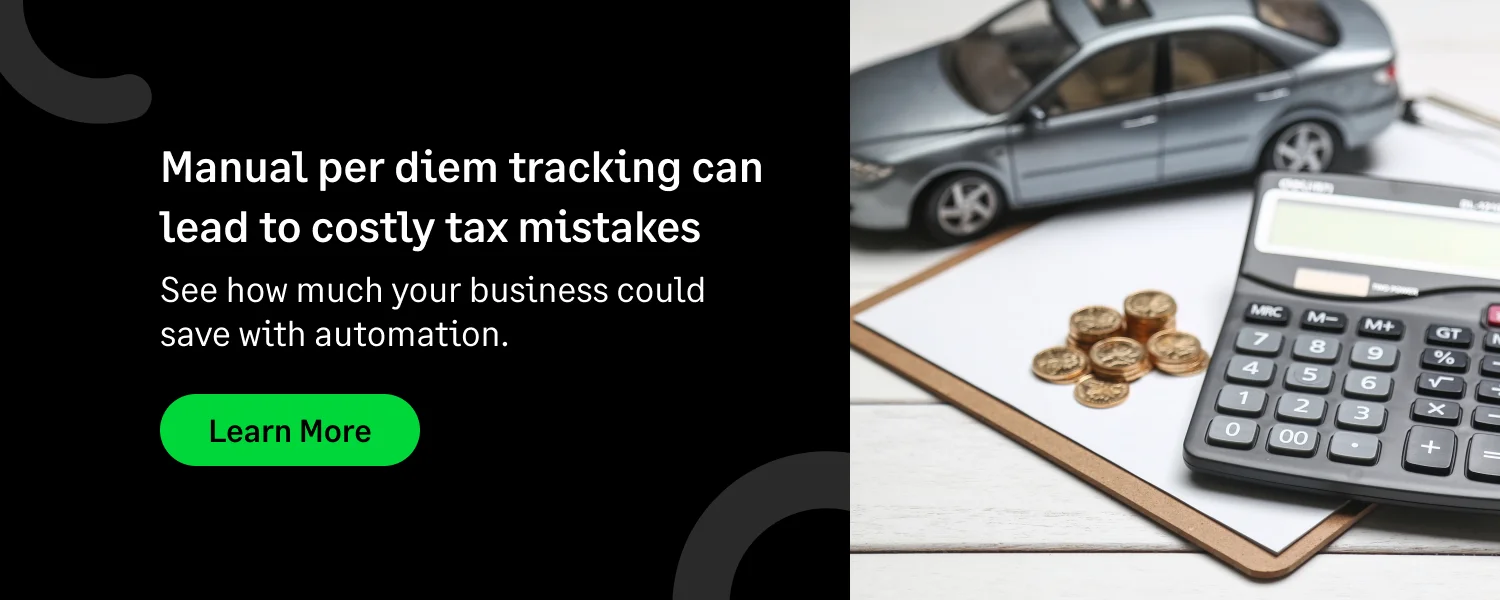
Why Automation Is The New Approach
Manually managing per diem is a complex and risky task. For businesses with multiple employees traveling to different locations, manually looking up the correct rates, applying transition rules, and ensuring everyone meets the reasonable period of time deadline can be a massive administrative burden. This process is prone to human error and can lead to costly compliance risks and tax liabilities.
How Sage Expense Management Can Help
Sage Expense Management is purpose-built to automate the entire per diem workflow, ensuring compliance and eliminating manual work.
Automated Rate Application
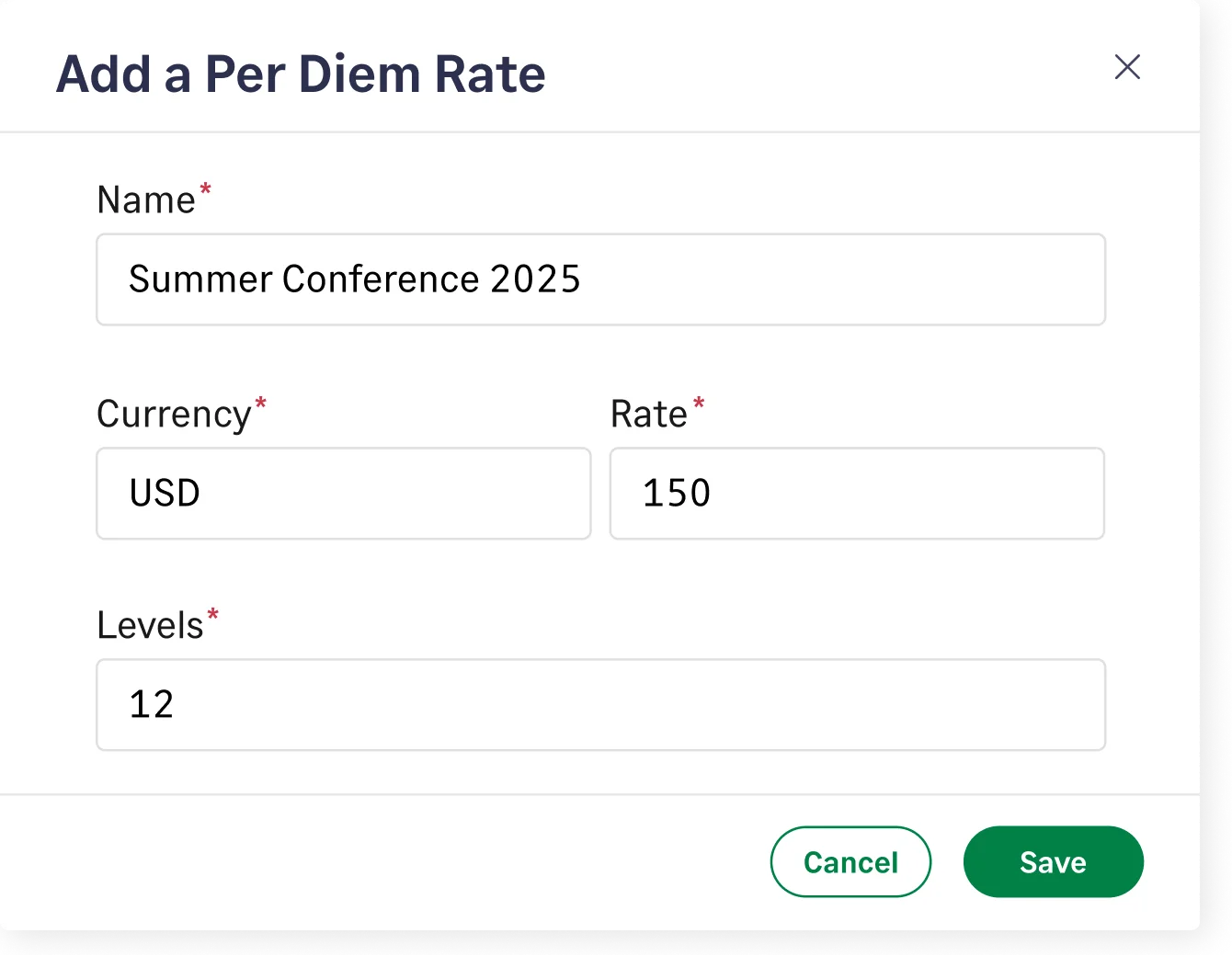
Its system automatically applies the correct per diem rate based on a user’s travel dates and locations. This eliminates the need for employees to manually look up rates from complex tables, whether you use the high-low or regular federal per diem method.
Real-time Compliance Checks
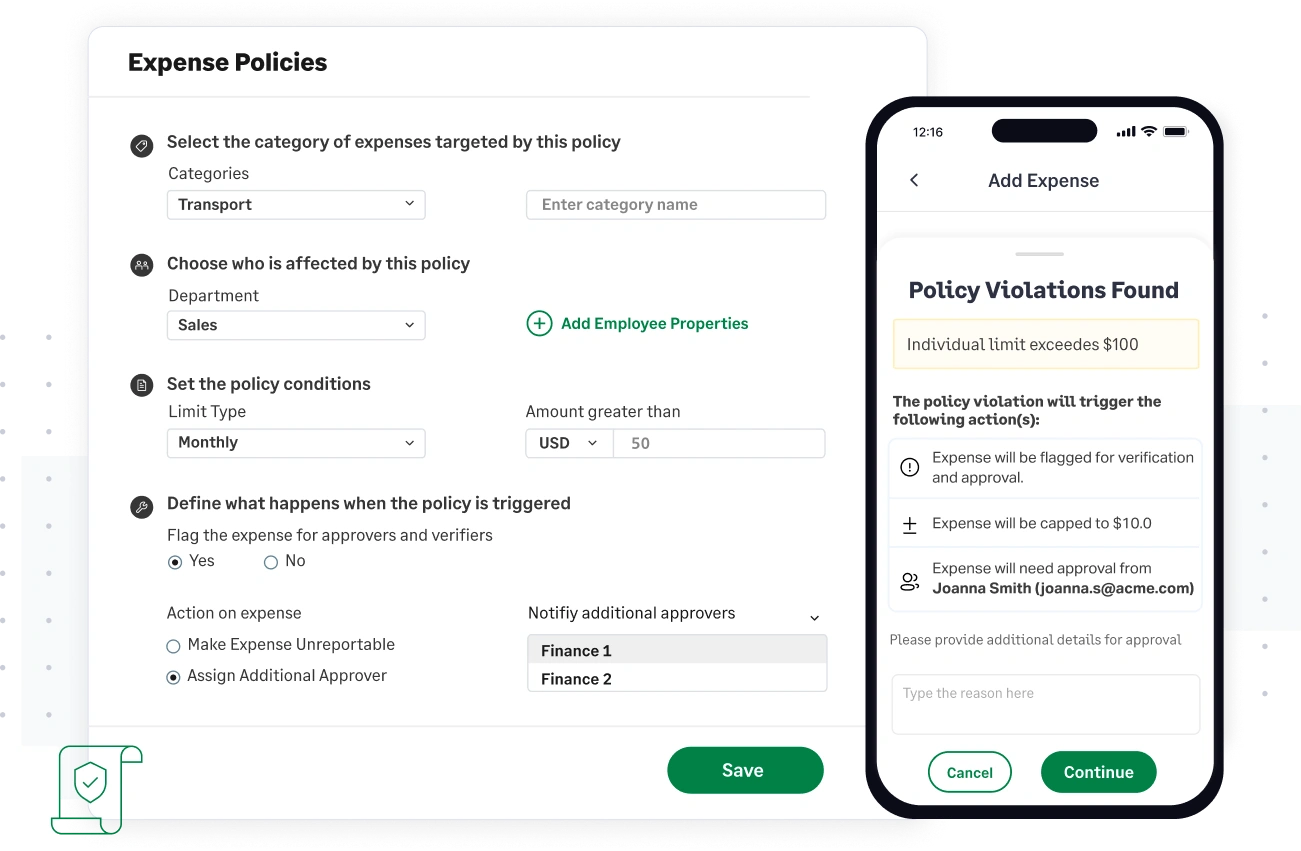
Its built-in policy engine enforces per diem rules and flags any non-compliant claims before they are even submitted for approval. This proactive approach ensures that the allowance remains non-taxable and that your records are always audit-ready.
Simplified Documentation
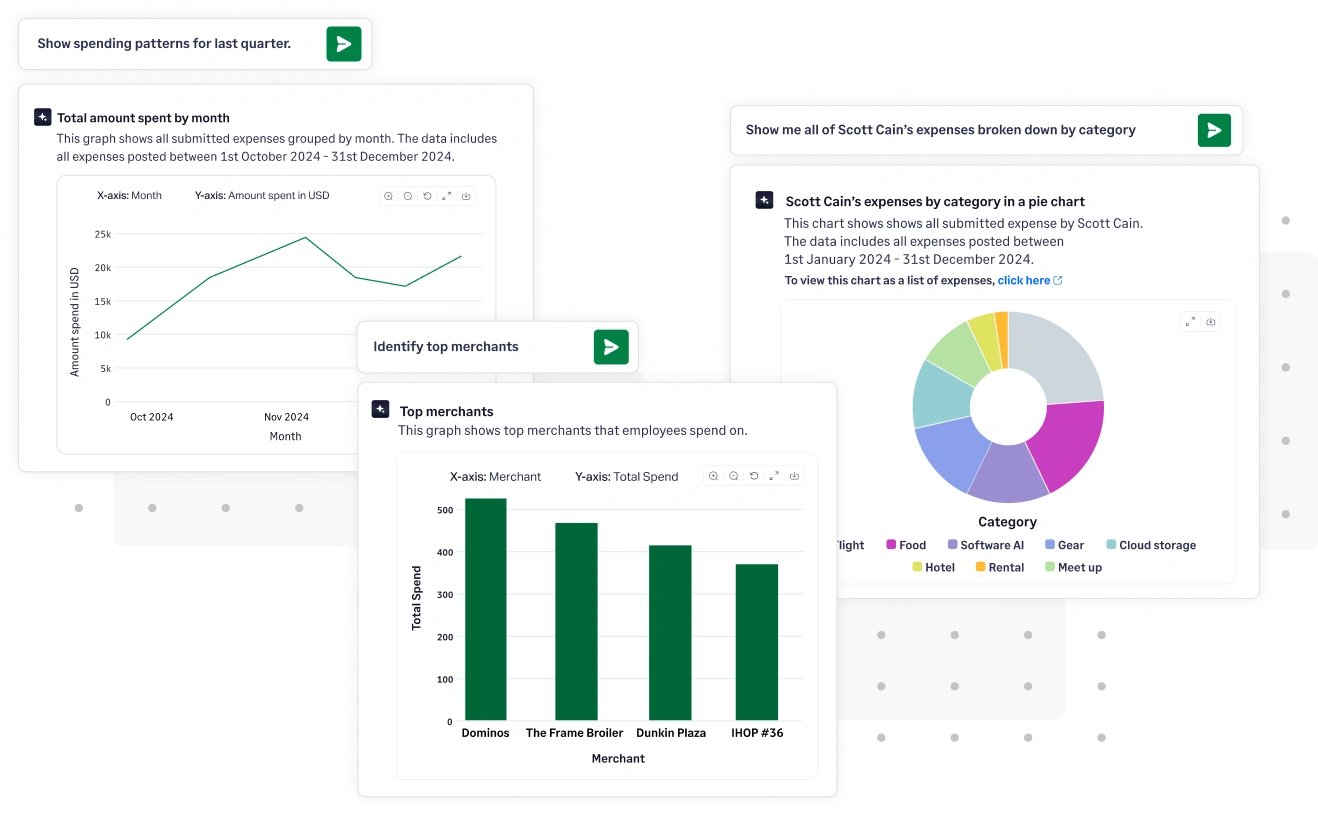
Sage Expense Management’s CoPilot centralizes all necessary documentation, such as travel dates and business purposes, to create an accessible and auditable record. This solves the problem of scattered or missing paperwork and provides a single source of truth.
Seamless Accounting Integration
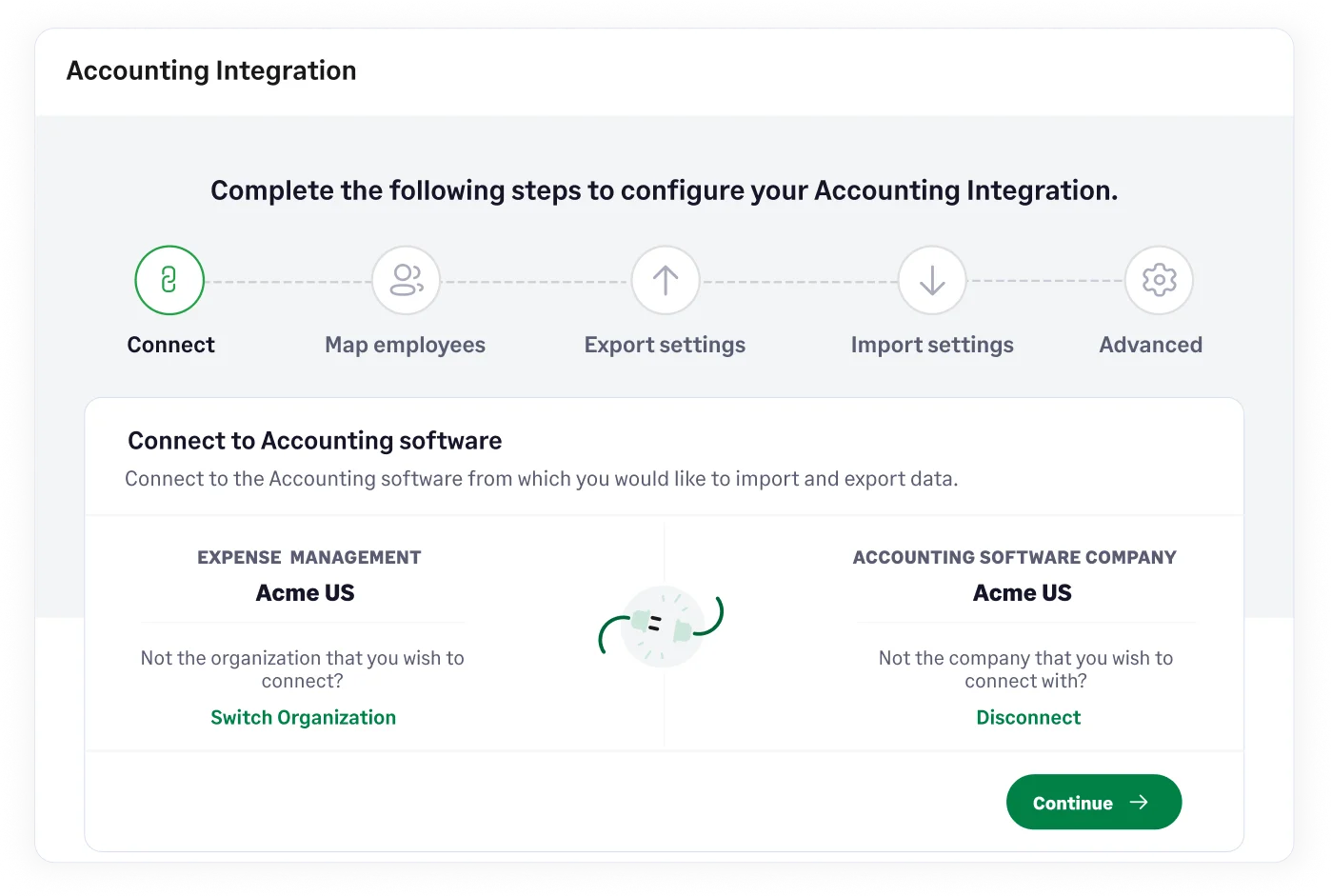
Sage Expense Management's two-way sync with various accounting software, such as QuickBooks Online/Desktop, Xero, and Sage Intacct, ensures per diem payments are accurately recorded for financial and tax reporting, eliminating manual data entry for your finance team.
While IRS Publication 1542 provides the foundational rules, a modern, growing business needs a modern solution to handle the complexity. Manual templates and spreadsheets are a great starting point, but they are not built to scale. They leave you exposed to errors, compliance risks, and wasted time.
By automating your per diem process, you can transform a compliance burden into a seamless, efficient workflow. Platforms like ours give you the control and accuracy you need to stay compliant and focus on what truly matters: growing your business.

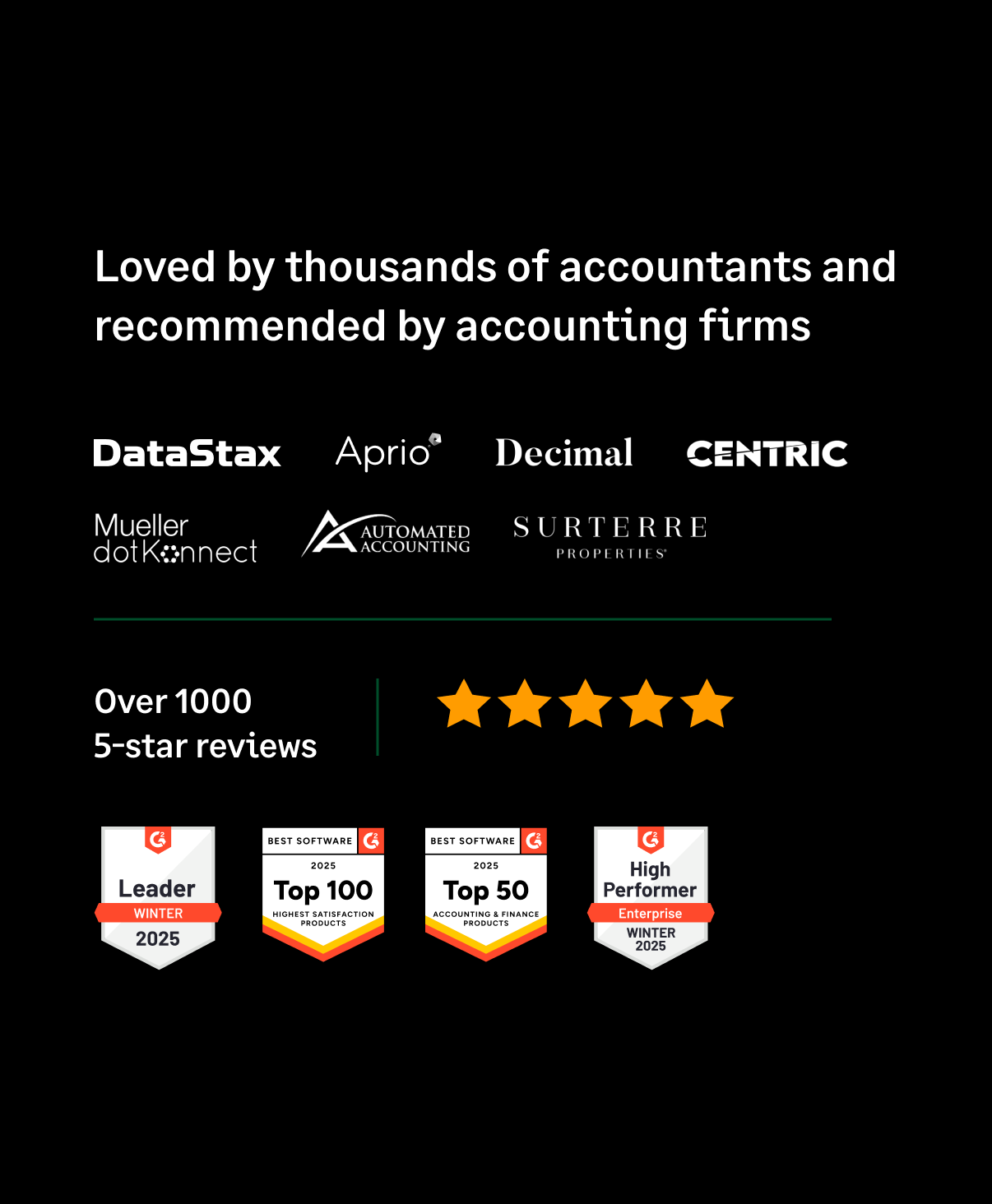



.jpg)


